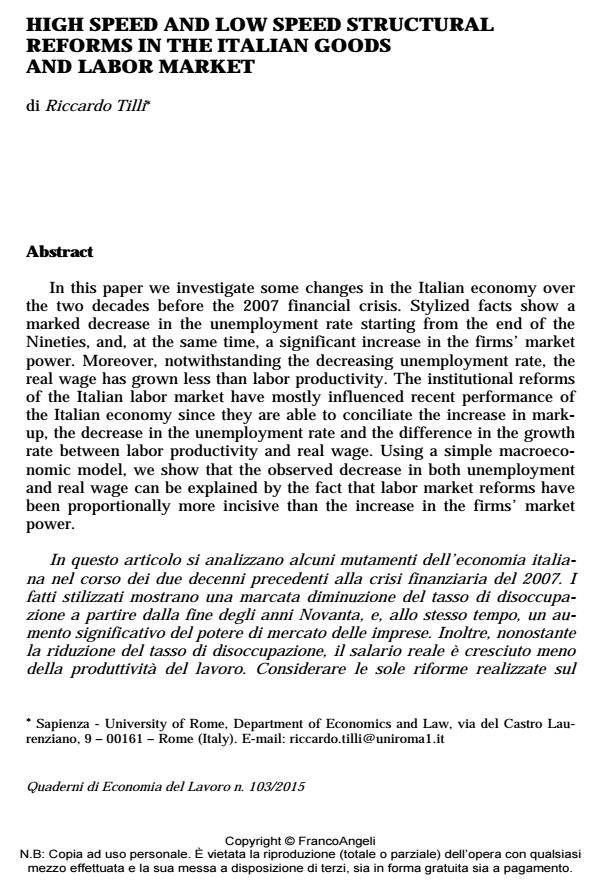High speed and low speed structural reforms in the italian goods and labor market
Journal title QUADERNI DI ECONOMIA DEL LAVORO
Author/s Riccardo Tilli
Publishing Year 2015 Issue 2015/103
Language Italian Pages 16 P. 67-82 File size 82 KB
DOI 10.3280/QUA2015-103005
DOI is like a bar code for intellectual property: to have more infomation
click here
Below, you can see the article first page
If you want to buy this article in PDF format, you can do it, following the instructions to buy download credits

FrancoAngeli is member of Publishers International Linking Association, Inc (PILA), a not-for-profit association which run the CrossRef service enabling links to and from online scholarly content.
In questo articolo si analizzano alcuni mutamenti dell’economia italiana nel corso dei due decenni precedenti alla crisi finanziaria del 2007. I fatti stilizzati mostrano una marcata diminuzione del tasso di disoccupazione a partire dalla fine degli anni Novanta, e, allo stesso tempo, un aumento significativo del potere di mercato delle imprese. Inoltre, nonostante la riduzione del tasso di disoccupazione, il salario reale è cresciuto meno della produttività del lavoro. Considerare le sole riforme realizzate sul mercato del lavoro non consente di spiegare l’andamento congiunto delle suddette variabili. Utilizzando un semplice modello macroeconomico, si mostra che la diminuzione osservata sia del tasso di disoccupazione che del salario reale può essere spiegata con il fatto che le riforme tendenti a rendere il mercato del lavoro più flessibile sono state proporzionalmente più incisive rispetto a quelle effettuate sul mercato dei beni, in termini di riduzione del potere di mercato delle imprese.
Riccardo Tilli, High speed and low speed structural reforms in the italian goods and labor market in "QUADERNI DI ECONOMIA DEL LAVORO" 103/2015, pp 67-82, DOI: 10.3280/QUA2015-103005